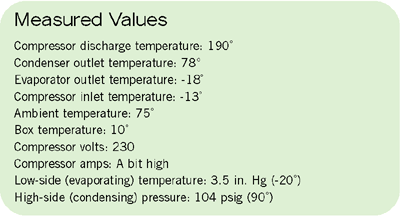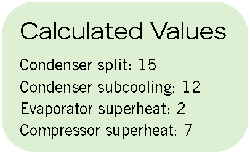The system in question is a low-temperature refrigeration system using R-134a. It has a thermostatic expansion valve (TXV) for the metering device and a receiver at the condenser outlet.
Here are some ways an evaporator can become oil-logged:
Oil usually logs in the evaporator because it is the coldest component with the largest tubes, thus the slowest for refrigerant velocity. Oil logged in the evaporator will coat the inner wall of the coil and reduce the heat transfer through the walls. This will cause a loss of capacity and poor performance. The compressor will be robbed of some of its crankcase oil and run with a lower-than-normal oil level. This may score or ruin mechanical parts in the compressor.

The symptoms can include:

The Compressor
Compressors may be noisy because of lack of oil. Metallic sounds may be heard from lack of lubrication or parts out of tolerance from excessive wear. Oil is a sound deadener as well as a lubricant.Because a lot of the oil is in the evaporator, the crankcase will be low on oil. In fact, the entire system's components, excluding the compressor, may have too much oil. This would cause a low oil level in the compressor's crankcase sight glass.
Many times a compressor that is flooding with refrigerant will turn into an oil pump. The crankcase will be foaming from the liquid refrigerant flashing in it. Small oil droplets entrained in the oil will be pumped through the compressor.
This will oil-log many components in the system. The velocity of the refrigerant traveling through the lines and the P-traps will try to return the oil from the system to the crankcase. Even an oil separator in the compressor's discharge line may have a hard time keeping up with excess oil in circulation. However, oil will continue to get into the system if the flooding situation is not remedied.
TXV Hunting
The TXV will also see too much oil passing through it. The evaporator's tailpipe will be oil-logged and the inside of the tubes coated with oil. The remote bulb of the TXV as the evaporator outlet will have a hard time sensing a true evaporator outlet temperature because of the reduced heat transfer through the line.The TXV will hunt and keep trying to find itself. A constant superheat will not be maintained. The TXV remote bulb may sense a warmer-than-normal temperature from the oil insulating the inside of the line. This could make the TXV run a low superheat and flood or slug the compressor with refrigerant. Often the sight glass in the liquid line will be discolored with a yellow or brown tint from refrigerant and oil flowing through it.
Low Compressor Superheat
Because the TXV may be running low superheat, this will cause the compressor superheat to run lower.Capacity Loss
Warmer-than-normal box temperatures and capacity losses occur because of the reduced heat transfer in both the condenser and evaporator from the excess oil coating the inner tubing. Capacity will be decreased.The compressor will run longer trying to maintain a desired box temperature. Evaporator temperatures and pressures may run low because of the reduced heat transfer from the oil insulating the evaporator tubes. This will cause reduced mass flow rates.
The technician must recognize the symptoms brought on by excessive oil in circulation in a refrigeration system. The service checklist will be the most important tool in helping to deal with this hard-to-detect problem.
John Tomczyk is a professor of HVACR at Ferris State University, Big Rapids, Mich. Tomczyk can be reached by e-mail at tomczykj@tucker-usa.com.
Publication date: 07/05/2004

Report Abusive Comment